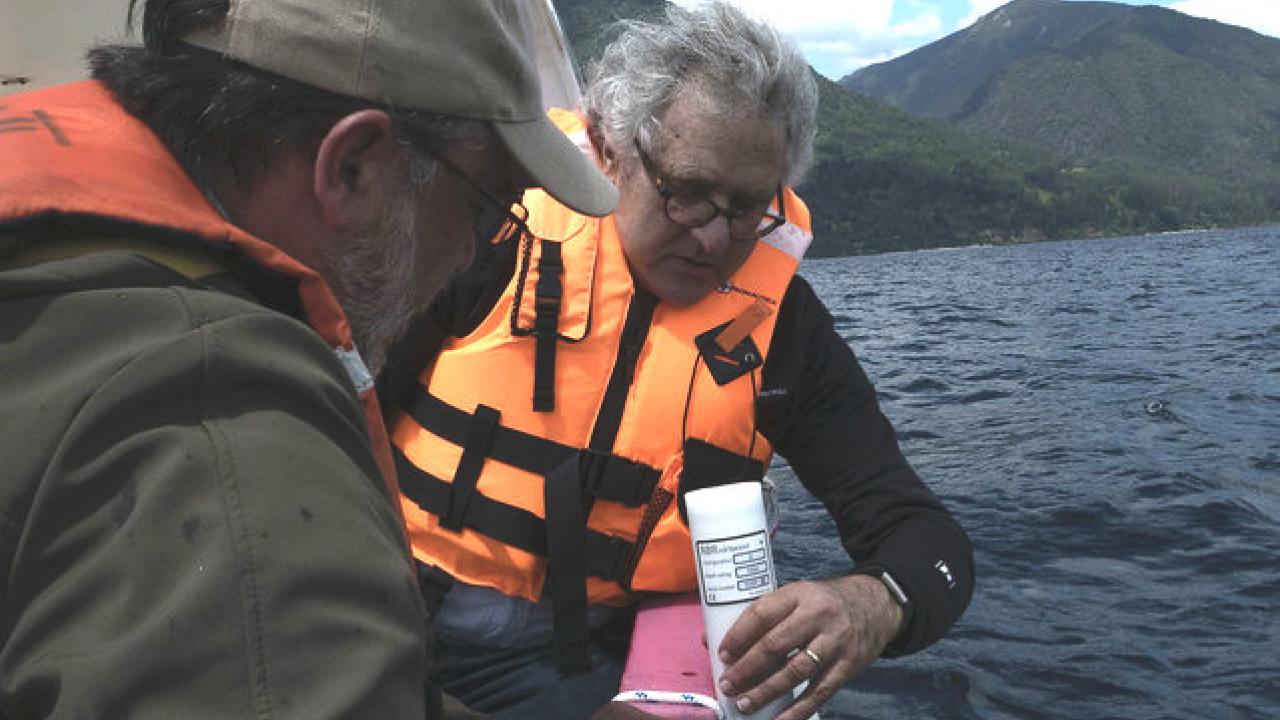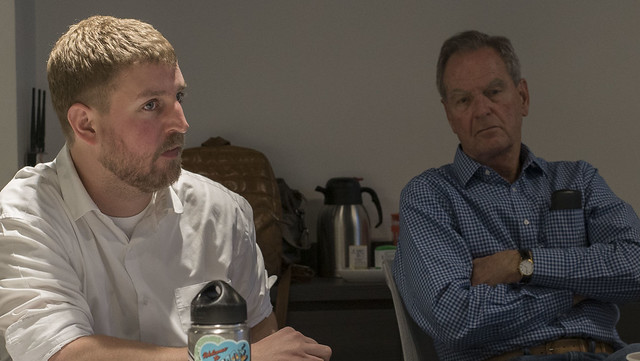
Chile for Clean Lakes and UC Davis: Collaborative work for the sustainable development of North Patagonian Lakes
Almost four decades ago, Lovell “Tu” Jarvis, Faculty Director of Global Centers for Latin America and the Caribbean, spent his honeymoon in the Lake Villarrica area (480 miles south of Santiago). Today, as one of the directors of the Foundation Chile for Clean Lakes (ChLL), Jarvis has reconnected with that lake which last year was declared a “saturated zone” due to its high levels of phosphate, nitrogen and chlorophyll.
“Once again I was amazed by the Lake District. I had forgotten how beautiful it was”, he commented on the week he spent in the south of Chile in a series of activities for ChLL, an international collaborative foundation which works on the preservation, sustainable development and resilience to climate change of the lakes in the northern area of Chilean Patagonia. In that international collaboration, UC Davis plays a key role with its conservation model of Lake Tahoe in the Sierra Nevada (states of California and Nevada).
In fact, Geoffrey Schladow, founding Director of UC Davis’ Tahoe Environmental Research Center (TERC) is also part of the board of ChLL and last January visited the Lake District. He brought a valuable gift with him: a monitoring station for Lake Panguipulli (30 miles south of Lake Villarrica), considered to be ChLL’s pilot case.
Panguipulli, the pilote case
“Currently readings are being performed twice a year from a boat. Now they will have data every 30 seconds. Initially, they are only temperature readings, since this is the best way of understanding how the lake is working. We are hoping to have three stations which will start to measure oxygen which is critical. What we have observed in Lake Tahoe and in other places around the world is that oxygen has been decreasing, particularly with climate change. Obtaining this data, especially on temperature and oxygen is a good first step. Later we will measure other things, such as nutrients,” explains Schladow, who completed his master in hydraulic engineering in UC Berkeley and his PhD in his native Australia.
Today Lake Tahoe is recognized for its clear waters and its infrastructure in accordance with its surroundings to practice sports and low impact tourism. However, since the silver rush in the neighboring town of Virginia from 1860 onwards, the lake only knew of depredation which reached its highest point between 1950-1960 with the large influx of tourists and sportsmen and little regulation. For this reason, Schladow highlights that “it is never too late” to start with measurements and monitoring.
Jarvis, an agrarian economist with nearly half a century of collaborative work with Chile, is emphatic in clarifying ChLL’s approach: “We want the lakes to be developed for human benefit, with businesses, tourists and employment for the local residents, but there is a conflict between urban development and the quality of the lakes’ waters, so always have to aim for a balance. There is going to be no economic development around a lake which is not pretty as well as clean.”
He adds: “That not only requires control of wastewater, but also of urban expansion which is what happened with Lake Tahoe. They have rules, not only about where one may build, but also regarding the kind and design of construction or where parking lots may be built."
"The idea is to guide development, not to ban it,” Tu Jarvis
Schladow adds: “It is easy to say that a company or a person is acting incorrectly, but usually they don’t know that what they are doing is wrong. Certainly, the experience with Lake Tahoe is that once people understand the impact of a particular development and realize that there are alternatives in the way of doing things, then everyone wins. There is no single way of building a house or a hotel.”
Initially, ChLL’s work will be focused on Lake Panguipulli which has suffered from impacts on the quality of its waters. Among other difficulties, between 2017 and 2019 the Municipality of Panguipulli faced a litigation with the Lake District’s Health Service Company (ESSAL for its acronym in Spanish) for dumping contaminated waters into the lake.

Additionally, Schladow is participating in the Technical Board for the Lake Villarrica Decontamination Plan which is coordinated by the Ministry for the Environment following the declaration of the lake as a “saturated zone”. The idea, however, is to look beyond this: to around a score of lakes in the north of Chilean Patagonia. This is because the ChLL’s mission is to develop a strategic transferable lacustrine Watershed Development Plan, in order to preserve the balance between economic development and future environmental challenges Chilean lakes.
An "exciting collaboration"
Schladow believes that his work with the ChLL is a “very exciting collaboration”. He commented that in the TERC they frequently receive people from all over the world who wish to collaborate in some issue. “They often leave and it all comes to nothing, but the people from Chile for Clean Lakes not only did not go away, but came back last May to invite me to Chile and so here I am again,” he said with a big smile.
Better still, their plans have remained unaltered. In March, Fernando Coz, Master in the Environment and Development at Edinburgh University (United Kingdom) took over as Environment and Sustainability Coordinator at UC Davis Chile, taking charge of the Executive Management of the Foundation Chile for Clean Lakes.
In addition to Jarvis and Schladow, Jesse Patteson, Chief Strategy Officer of Keep Tahoe Blue and Devin Middlebrook, Sustainability Program Coordinator of the Tahoe Regional Planning Agency represent California in ChLL’s Board of Directors. While in Chile, the directors are the German-Chilean economist in natural resources, Nicola Borregaard, General Manager of EBP Chile and Director of Public Space; Pablo Jordan, founder of URBE Architects and Manager of the Chilean Architects’ Association (AOA) and Jorge Bunster, Minister for Energy from 2012 to 2014.
